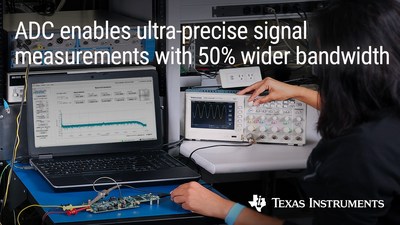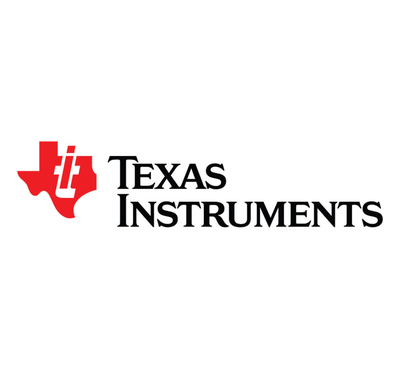TI's new precision wideband ADC pushes data-acquisition performance higher while cutting size and power consumption in half
Rhea-AI Summary
Texas Instruments (TXN) has launched the ADS127L11, the smallest 24-bit wideband analog-to-digital converter (ADC) that provides top-notch signal-measurement precision. This new ADC is 50% smaller than its nearest competitors and optimizes power consumption, resolution, and measurement bandwidth. It features a wideband mode with data rates up to 400 kSPS and a 30% higher signal-to-noise ratio. The device consumes only 3.3 mW at 50 kSPS, enhancing battery life for portable medical devices. Pricing starts at US$5.75 for 1,000-unit orders.
Positive
- 50% smaller package compared to competitors, enhancing design flexibility.
- Achieves industry-leading AC and DC performance, maximizing channel density.
- 50% lower power consumption extends battery life in devices like EEG machines.
- Offers 50% wider bandwidth and significantly higher data throughput.
Negative
- None.
News Market Reaction 1 Alert
On the day this news was published, TXN gained 0.64%, reflecting a mild positive market reaction.
Data tracked by StockTitan Argus on the day of publication.
DALLAS, Dec. 6, 2021 /PRNewswire/ -- Texas Instruments (TI) (Nasdaq: TXN) today introduced the smallest 24-bit wideband analog-to-digital converter (ADC) that delivers industry-leading signal-measurement precision at wider bandwidths than competing ADCs. The ADS127L11, the newest product in TI's portfolio of precision wideband ADCs, achieves ultra-precise data acquisition in a
"There is a clear trend toward smaller solution size and lower power consumption in applications such as test and measurement equipment and portable medical devices, where improved battery life is imperative," said Noman Akhtar, senior research analyst, Omdia. "There is an urgency to provide increased data throughput, higher bandwidth and lower power, all in a smaller footprint."
Capture high-resolution signals with
The highly flexible ADS127L11 offers wideband and low-latency filter options to optimize ADC performance and deliver tailored, high-performance data acquisition in a broad range of industrial systems. Designers can use wideband mode to improve AC measurement resolution with
Reduce ADC footprint with a
Until now, miniaturized, battery-powered industrial equipment designers had to choose between an ADC's size and measurement precision at higher frequencies. The ADS127L11 eliminates this trade-off. In a 3-mm-by-3-mm quad flat no-lead (WQFN) package, this single-channel device is
Extend battery run time with
The ADS127L11 consumes half the power of other ADCs, enabling designs such as portable electroencephalogram (EEG) machines and power-quality analyzers to better optimize power consumption against bandwidth requirements using the device's power-scalable modes. Power consumption is as low as 3.3 mW with sampling rates as high as 50 kSPS, improving signal resolution and battery life. Read more about the benefits of this lower power consumption in the article, "Balancing ADC size, power, resolution and bandwidth in precision data-acquisition systems."
Package, availability and pricing
The ADS127L11 is available for purchase on TI.com, and comes in a 20-pin, 3-mm-by-3-mm WQFN package or a 20-pin, 6.5-mm-by-4.4-mm thin shrink small-outline package (TSSOP). Pricing starts at US
About Texas Instruments
Texas Instruments Incorporated (Nasdaq: TXN) is a global semiconductor company that designs, manufactures, tests and sells analog and embedded processing chips for markets such as industrial, automotive, personal electronics, communications equipment and enterprise systems. Our passion to create a better world by making electronics more affordable through semiconductors is alive today, as each generation of innovation builds upon the last to make our technology smaller, more efficient, more reliable and more affordable – making it possible for semiconductors to go into electronics everywhere. We think of this as Engineering Progress. It's what we do and have been doing for decades. Learn more at TI.com.
![]() View original content to download multimedia:https://www.prnewswire.com/news-releases/tis-new-precision-wideband-adc-pushes-data-acquisition-performance-higher-while-cutting-size-and-power-consumption-in-half-301437739.html
View original content to download multimedia:https://www.prnewswire.com/news-releases/tis-new-precision-wideband-adc-pushes-data-acquisition-performance-higher-while-cutting-size-and-power-consumption-in-half-301437739.html
SOURCE Texas Instruments









